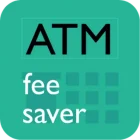Not sure if I should carry coins for public transport in Madagascar or if card payments are common. Advice?
Honestly, it was stressful at times. In Tamatave, I tried to pay a taxi-brousse driver with a 20,000 ariary note, and he flatly refused. He wanted exact change only. None of the nearby ATMs worked either - the Bank of Africa machine was out of service. I ended up waiting an hour until a shop broke my bill. Definitely don’t rely on large notes or on ATMs in smaller towns.
It was cheap and straightforward once I had cash. A taxi-be ride across Antananarivo cost less than 1,000 ariary, and locals were friendly about showing me which bus to take. ATMs from Bank of Africa worked fine for me in Tana, and I just kept a pocket full of small notes for transport. No tech, no cards, but it gave me a real feel of Madagascar’s daily life.
I stayed near Analakely in Antananarivo and used taxi-bes daily. Each ride was 500-1,000 ariary, and I had to hand over coins or small bills directly to the conductor. I withdrew cash from a BNI ATM near Independence Avenue, but often it gave me large bills. To break them down, I bought fruit at the market. On a trip to Morondava, the taxi-brousse ticket office only accepted cash, no cards, not even bank transfers. Always keep small ariary handy.
In Madagascar, public transport is mostly cash-only. The taxi-be minibuses in Antananarivo and other cities require small ariary notes - no cards are accepted. Even long-distance taxi-brousse services between Tana and Tamatave or Fianarantsoa are cash only. ATMs from BNI Madagascar and Bank of Africa are common in larger towns, but don’t expect to find working ones in villages. Carrying local cash in small denominations is essential for buses and minibuses.


